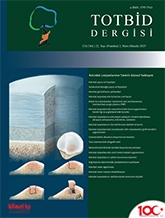
The prevalence of osteoarthritis (OA) is increasing, due to the aging population and increasing obesity. The current gold standard for the assessment of OA in clinical and epidemiological settings is based on radiographs. However, various options of surgical or pharmacological novel treatment methods of OA motivated the importance of noninvasive direct imaging of cartilage. Over the last decades, technical developments in magnetic resonance imaging technology introduced high resolution images of the cartilage which allowed morphological evaluation in a better quality. Semi-quantitative scoring methods, has greatly added to the understanding of the pathophysiology and natural history of OA, also made easier the follow-up of the treatment methods on the patients. Recently, newly introduced compositional techniques, such as T2 mapping, T1 rho imaging and delayed gadolinium enhanced MRI of cartilage (dGEMRIC) etc, may provide information about the physiological content of the cartilage. These data has been useful in identifying cartilage degeneration at an earlier stage and may help to develop and assess strategies for prevention and treatment. In this review, cartilage structure, injury patterns and changes due to the degeneration will be described and the methods which is currently being used in imaging will be concluded with the recent novel techniques.